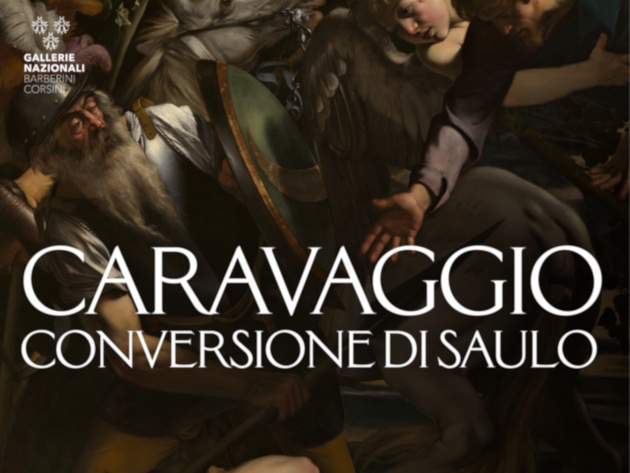
As the author of powerful and dazzling compositions, Caravaggio is one of the most beloved painters in art history. On the heels of the success of the exhibition Caravaggio 2025, Palazzo Barberini presents to the public an unprecedented comparison between two versions of the same theme, the conversion of Saint Paul. The Sala Paesaggi of the museum is hosting the Odescalchi Altarpiece – an extraordinary work that ended up in Nicoletta Odescalchi’s collection after various changes of ownership – alongside a high-definition reproduction of the canvas preserved in the church of Santa Maria del Popolo.
The altarpiece is one of two paintings that banker Tiberio Cerasi commissioned from Caravaggio in 1600 for his family chapel. For reasons that remain unclear, the two works were never placed in the chapel, and the painter executed two new versions, this time on canvas, which can still be admired today in the church in Piazza del Popolo. The juxtaposition of the two paintings allows us to gain a deeper understanding of Caravaggio’s creative process and the transformations in his style, between narrative tension, introspection and spirituality. The precious Pala Odescalchi painted on panel is distinguished by the movement within the scene, the variety of characters and the use of bright colors. The approach of the later canvas, now in the Roman church, is different, more essential in composition and more intense in emotional register.
A copy of the infrared reflectography of the painting, carried out during the 2006 restoration, which is also on display to the public, reveals the artist’s distinctive technical and compositional choices. The unusual support, consisting of seven horizontal planks of cypress wood, with a perimeter band added at a later date, required atypical preparation, namely a light gray ground spread diagonally, designed to simulate the grain of the canvas. Investigations revealed numerous modifications during execution. Paul’s face was varied several times; Christ, in the first draft, appeared beardless; differences can be seen in the weapons, vegetation, and decorative elements that make up the background. The painting is also striking for the quality of its materials; Caravaggio uses pigments rare in his usual palette, such as azurite, gold, and silver, contributing to an even brighter and more vibrant paint surface.
Informations
 Condividi
Condividi











































